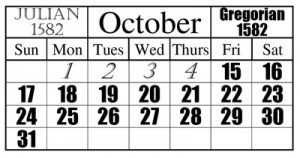Easter, the Sinhala and Tamil New Year and the Spring Festival
 Easter Sunday falls sometime between late March and late April and the Sinhala and Tamil New Year in middle of April. How and when were they defined?
Easter Sunday falls sometime between late March and late April and the Sinhala and Tamil New Year in middle of April. How and when were they defined?
The Sun as seen by observers at sunrise does not rise at the same direction (Azimuth). Ancient observers built structures such as Stonehenge to track the azimuth of the rising Sun.
In the Northern hemisphere of Earth, when the Sun rises an extreme 23.5 degree south around Dec 21, that is known as the Winter Solstice and an extreme 23.5 degrees North around June 21 known as the Summer Solstice. When it rises exactly East around March 21 and September 21 that time is known as the Equinoxes.
At the spring (Vernal) Equinox there has been a Festival to celebrate the end of a cold winter and start of spring. With the adoption of Christianity, Easter took the role of this Spring Festival.
The date of Easter was defined in 325 CE at the Council of Nicaea as the first Sunday after the full moon following March 21. As it is defined relative to a Full Moon, Easter can fall between March 22 and April 25 for Non-Orthodox Christians. When Julius Caesar established the Julian calendar in 45 BCE, he set March 25 as the date of the spring equinox. However with a Leap Year, every year divisible by 4, the Julian year (365.25 days) is slightly longer than the mean tropical year (365.2422 days), between vernal equinoxes. Therefore vernal Equinox “drifted”away from March 21st and Easter into Summer at a rate of about 3 days every 4 centuries. In 326 CE the spring equinox had occurred about March 21, but by 1582 CE, it had drifted backwards to March 11 in the Julian calendar.
Pope Gregory without changing the definition of Easter, which had been decided in 326 CE, changed the calendar to keep the equinox on March 21. Century years were not leap unless divisible by 400. In 1582 when it was adopted by Catholic countries, the day after October 4 was taken as October 15 to remove 10 extra days. It was adopted by Protestant Britain and Dutch Dominions including Ceylon only in 1752 when the day after September 2 was taken as September 14. Greece was the last country to adopt it in 1923, but the Eastern Orthodox Church still uses the Julian calendar. The Gregorian Year is 365.2425 days long, and close to the Tropical year which in year 2000 was 365.242189 days.
There is a slow precession of the axis of Earth rotation at an inclination of 23.5 degrees in its orbit around the Sun. Five thousand years ago, in ancient Egypt this axis pointed close to star Thuban, like it is presently towards the “North Star” Polaris, and 12,000 years in future towards star Vega. In this same 25,772 year cycle, the position of Sun on the ecliptic at the Vernal Equinox moves through all the constellations of the Zodiac.
In the 4000 years since observations were recorded in Mesopotamia, the Sun at Vernal Equinox has moved from the border between the constellations of Taurus and Aries, through Aries and most of Pisces. It will move into Aquarius in the “near” future. This has been referred to as the dawn of the age of Aquarius. Actually around 2600 CE, and not the 1960’s in which it was made popular.
The Sidereal Year is 365.25636 days and is the time taken for Earth to complete one orbit around the Sun i.e. the Sun to appear in the same location on the ecliptic. Sidereal Year is 20 min 24.4 seconds longer than the tropical year.
The Sinhala New Year is defined as the instant the apparent direction to the Sun moves across a fixed location on the ecliptic known as the first point in Aries.This point at Equatorial coordinates 01:28:21+09:15:35(J2000) is actually in constellation Pisces as defined by International Astronomical Union (IAU). Since the adopted civil year is the tropical year, the mean date on which the New Year falls advances one day every 70.56 years or through all 365 days of the year in about 25,772 years.
The older generation would remember that New Year was on April 12 and 13. Now it is 13th or 14th and in the future 14 or 15. Three hundred and thirty five years ago it would have been on about April 8 on Gregorian or on Julian calendar on March 28 as mentioned by Robert Knox in his publication of 1681.
By Astronomical computation we can find when the Sinhala New Year with our adopted First point of Aries was on vernal equinox. i.e. the Sun rose exactly East on Sinhala New Year. Sinhala New Year appears to have been defined on 282 CE the year of King Mahasena’s coronation.
The Hindu New Year uses 78 CE or the beginning of the Saka Era. In the 19th Century Almanacs one finds a Hindu New Year which was 2 or 3 days after Sinhala New Year. Sometime in the early 20th century the Tamil New Year in Sri Lanka was adopted to be the same and we got a common Sinhala and Tamil New Year.
A new definition would be needed if we don’t wish the Sinhala and Tamil New Year to move far from the middle of April on the long term.


